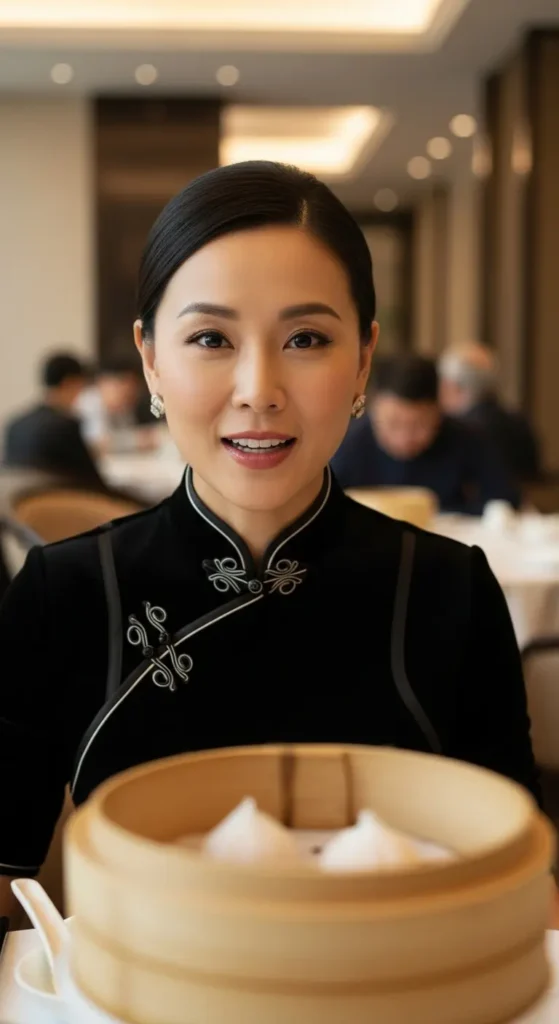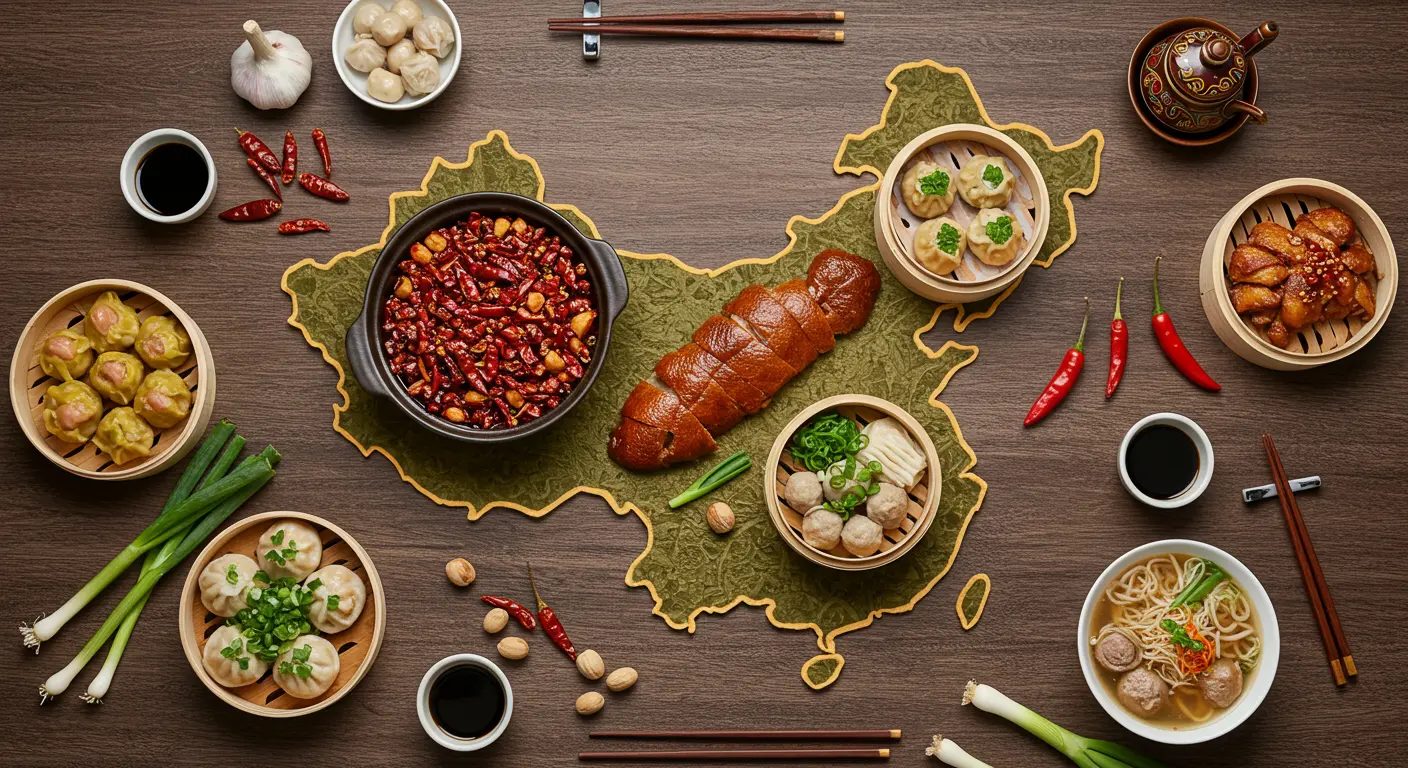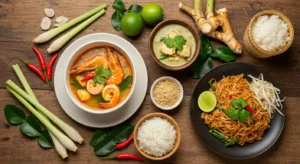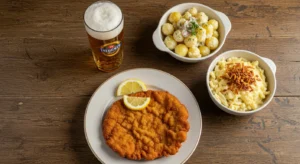Table of Contents
A Beginner’s Guide to China Food: Your Passport to a Culinary Adventure
Let’s be honest. When you think of “Chinese food,” what’s the first thing that comes to mind? For many of us, it’s a cardboard box filled with sweet, sticky, and deliciously greasy takeout. A comforting treat, for sure. But here’s the bold truth: that Americanized version is just a tiny, sugar-coated peek into one of the world’s oldest, most complex, and wildly diverse culinary universes.
Real Chinese cuisine isn’t a monolith. It’s a vibrant tapestry of flavors, techniques, and traditions that have been perfected over thousands of years. Imagine a country as vast as a continent, with climates ranging from frozen tundras to tropical rainforests. Now imagine the food that springs from that. It’s a journey from the mouth-numbing peppercorns of Sichuan to the subtle, broth-based mastery of Fujian.
Feeling a little overwhelmed? Don’t worry. This guide is your friendly primer. We’re going to move beyond the menu you know and explore the incredible world of authentic China food. By the end, you’ll not only know what to order but you’ll understand the rich stories behind the dishes.
The Heart of the Matter: It’s All About the Region
If you take away one thing from this guide, let it be this: in China, food is regional. Historians and chefs often speak of the “Eight Great Cuisines” (八大菜系, Bā Dà Cài Xì), each a universe of its own. Their unique flavors were born from local ingredients, history, and climate.
Let’s explore four of the most influential ones that you’re most likely to encounter.
1. Sichuan (Szechuan): The Bold & The Brave
Sichuan cuisine is famous for its punch-in-the-face flavors. It’s not just about heat; it’s about a complex sensation known as “málà” (麻辣), which translates to “numbing and spicy.” This comes from the Sichuan peppercorn, which doesn’t burn your tongue like a chili but creates a tingling, almost electric sensation on your lips and mouth.
Must-Try Dishes for Beginners:
- Kung Pao Chicken (宫保鸡丁, Gōngbǎo Jīdīng): The real deal is a world away from the gloopy version you might know. Authentic Kung Pao is a beautiful balance of sweet, sour, salty, and spicy, with crunchy peanuts, tender chicken, and those numbing Sichuan peppercorns.
- Mapo Tofu (麻婆豆腐, Mápó Dòufu): A humble dish that is pure magic. Soft tofu cubes are swimming in a fiery red sauce made with fermented bean paste, minced meat, and, you guessed it, plenty of málà. It’s creamy, spicy, and utterly addictive over a bowl of steamed rice.
2. Cantonese (Yue): The Art of Subtlety
Hailing from Southern China (around Guangzhou and Hong Kong), Cantonese cuisine is what most Westerners are initially familiar with. But the authentic version is far more refined. The philosophy here is to highlight and preserve the natural, fresh flavor of the ingredients. You’ll find less heavy spice and more steaming, stir-frying, and braising.
Must-Try Dishes for Beginners:
- Dim Sum (点心, Diǎnxīn): This isn’t a single dish but a glorious culinary event. Think of it as Chinese tapas. Servers push carts laden with small bamboo baskets filled with steamed buns (bao), shrimp dumplings (har gow), pork dumplings (siu mai), and so much more. It’s a social, noisy, and utterly delightful way to eat.
- Char Siu (叉烧, Chāshāo): Those gorgeous red strips of barbecued pork you see hanging in restaurant windows? That’s Char Siu. It’s sweet, savory, slightly sticky, and impossibly tender. It’s often served over rice or noodles.
3. Jiangsu (Huaiyang): The Imperial Feast
Often considered one of the most sophisticated Chinese cuisines, Jiangsu food is known for its meticulous preparation, beautiful presentation, and light, slightly sweet flavors. This is the cuisine that once supplied the imperial courts. The focus is on freshness and bringing out the natural umami taste.
Must-Try Dishes for Beginners:
- Lion’s Head Meatballs (狮子头, Shīzitóu): Don’t worry, no lions are involved! These are massive, incredibly tender pork meatballs that are said to resemble a lion’s head (with vegetables as the mane). They’re slowly braised to perfection and literally melt in your mouth.
- Sweet and Sour Mandarin Fish (松鼠桂鱼, Sōngshǔ Guìyú): A true showstopper. The fish is scored so perfectly that it puffs up when fried, resembling a squirrel’s tail. It’s then draped in a bright, perfectly balanced sweet and sour sauce.
4. Shandong (Lu): The Grandfather of Northern Cuisine
As one of the oldest cuisines, Shandong cooking heavily influences the food of Beijing and Northern China. It’s known for its salty, crisp flavors and a heavy reliance on seafood, grains like wheat (hence the love for noodles and steamed buns here), and masterful use of vinegar and garlic.
Must-Try Dishes for Beginners:
- Peking Duck (北京烤鸭, Běijīng Kǎoyā): The world-famous dish you simply must try. A whole duck is roasted until the skin is impossibly crisp and amber-colored. It’s ceremoniously carved tableside and served with thin pancakes, spring onions, cucumber, and a sweet bean sauce. You assemble your own little wrap—it’s an experience.
- Baozi (包子): These are fluffy, steamed buns filled with various stuffings, most commonly pork. They are the ultimate Northern Chinese street food snack—hearty, warming, and delicious.
Beyond the Plate: Key Principles of a Chinese Meal
Understanding a few core ideas will make everything click into place.
- Balance is Everything: Chinese cooking strives for harmony between flavors (salty, sour, sweet, bitter, spicy), textures (crispy, tender, soft, crunchy), and colors.
- Rice is a Side, Not the Main Event: In the South, rice is the staple carbohydrate, while noodles and buns dominate the North. But they are meant to complement the shared dishes, not be the star.
- It’s a Shared Experience: Unlike a Western meal where everyone orders their own plate, Chinese meals are communal. A variety of dishes are ordered for the table, and everyone helps themselves, creating a social and interactive dining experience.
Your First Time at an Authentic Restaurant? Don’t Panic.
Walking into a restaurant where the menu is entirely in Chinese can be daunting. Here’s how to handle it like a pro:
- Look at What Others Are Eating: This is the oldest trick in the book. If you see a dish that looks (and smells) amazing on another table, just point to it and say, “I’ll have that, please.”
- Embrace the Pictures: Many authentic places have picture menus. Use them!
- Ask for Recommendations: If the server speaks English, don’t be shy. Simply say, “What is your most popular dish?” or “What do you recommend?”
- Start Small: You don’t have to dive into chicken feet on day one. Ease in with the “Must-Try” dishes listed above. They are beloved for a reason.
Frequently Asked Questions (FAQs)
Q: Is MSG bad for you, and is it in all Chinese food?
A: This is a huge misconception. Monosodium Glutamate (MSG) is a naturally occurring compound found in foods like tomatoes and Parmesan cheese. While some individuals may have a sensitivity to it, major health organizations like the FDA classify it as “generally recognized as safe.” While it’s used as a flavor enhancer in some American-Chinese restaurants, it is far less common in authentic Chinese cooking, which relies on natural umami from stocks, fermented pastes, and mushrooms.
Q: What’s the difference between “Chinese food” and “American-Chinese food”?
A: American-Chinese food is a unique and delicious cuisine in its own right, adapted over generations to suit Western palates and ingredients. It often features sweeter, saucier, and deeper-fried dishes (like General Tso’s Chicken or Crab Rangoons). Authentic Chinese food is more varied, focusing on regional flavors, fresher ingredients, and a balance of tastes and textures.
Q: I can’t handle spice. Can I still enjoy Chinese food?
A: Absolutely! While Sichuan and Hunan are famous for heat, vast swathes of Chinese cuisine are not spicy at all. Focus on Cantonese (Dim Sum, steamed fish), Jiangsu (soups, braised dishes), and Beijing (Peking Duck, noodles) cuisines. You can also always say “bù yào là” (不要辣) which means “no spice.”
Q: What are some essential ingredients I’d find in a Chinese kitchen?
A: The holy trinity is light and dark soy sauce. From there, Shaoxing wine (for cooking), Chinkiang vinegar (a dark, fragrant vinegar), oyster sauce, and sesame oil are fundamental. For Sichuan cuisine, chili bean paste and Sichuan peppercorns are non-negotiable. A great resource for understanding these ingredients is the China Cultural Center’s culinary section, which provides cultural context.
Q: Do I need to use chopsticks?
A: It’s a great skill to learn and shows respect for the culture, but don’t stress! Most restaurants will happily provide a fork if you ask. The best tip for beginners? Just practice. It gets easier every time.
Ready to Explore?
The world of China food is a deep, delicious, and endlessly fascinating one. It’s a cuisine built on history, philosophy, and a profound love for sharing good food with good company. So the next time you have a craving, skip the usual takeout order. Instead, grab a friend, find a well-reviewed regional restaurant, and be a little adventurous.
Point to something new. Share a few dishes. Slurp your noodles loudly (it’s a compliment to the chef!). You’re not just eating a meal; you’re tasting thousands of years of culture. And trust me, your taste buds will thank you for the passport stamp.




